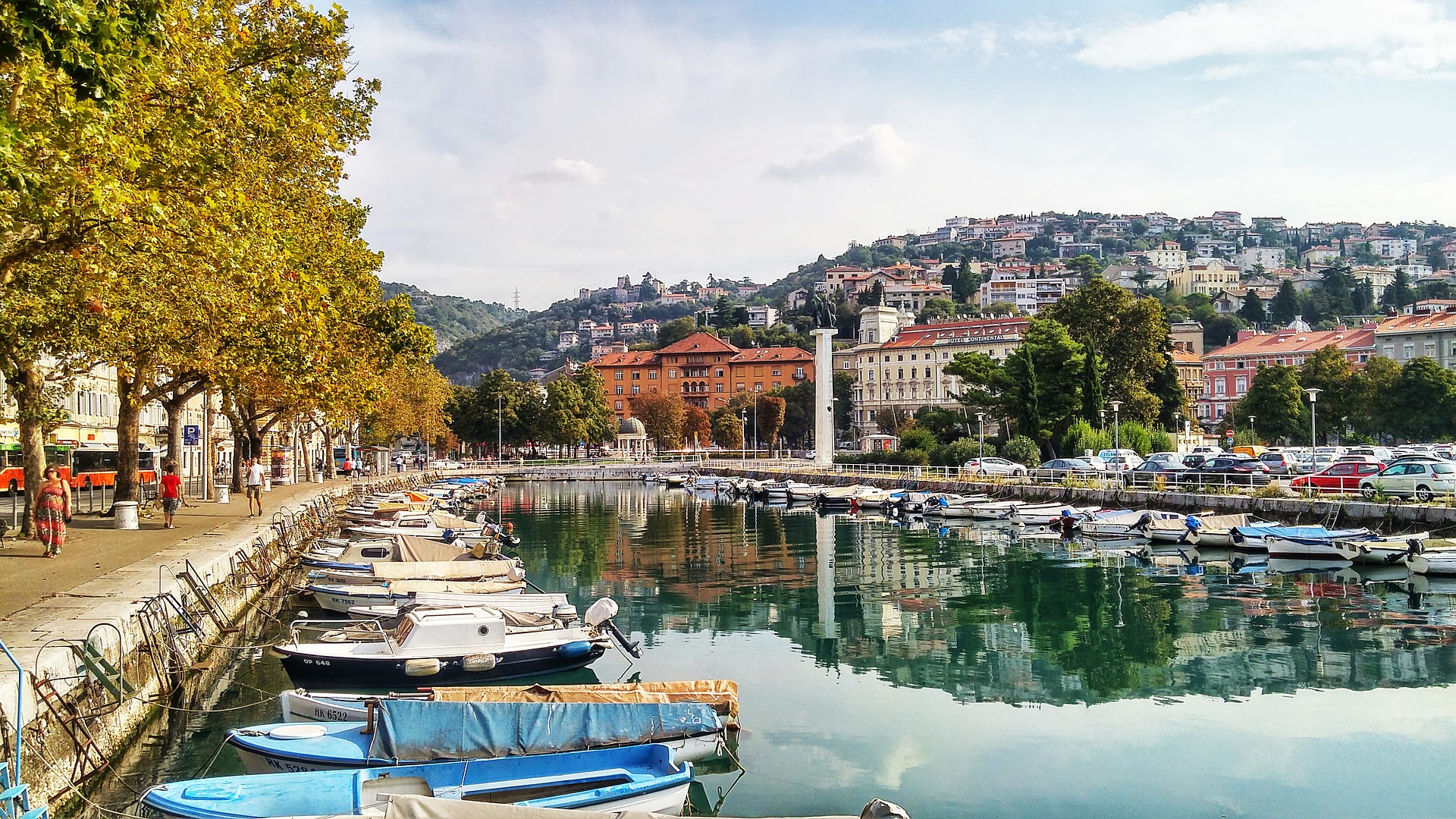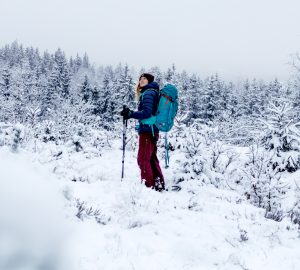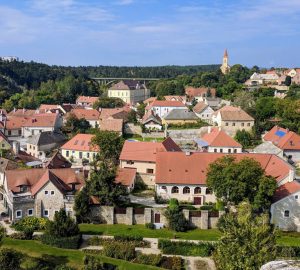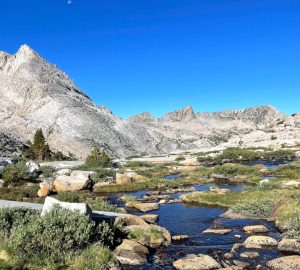Rijeka is the European capital of culture 2020. The Croatian seaport was nominated together with Galway in Ireland. Rijeka is located in the very north of the Adriatic Sea. If you are looking for a relaxed city trip on the Mediterranean, this is the place to be. Rijeka offers culture, nightlife and an exciting landscape around the city. We’ll briefly introduce you to the most important sights.
Rijeka has 144,000 inhabitants. Thanks to the city‘s four universities there are many students. Here, centuries of eventful history encounter youthful spirit.
Whoever comes to Rijeka immediately feels the cultural diversity. Both the Italian heritage and the Austrian past go great together in Rijeka: Italian-styled restaurants are lined up next to Austrian coffee houses. In between you’ll find a typical Croatian konoba – that’s the name of the small pubs with Croatian specialities that can be found almost everywhere on Croatia’s Adriatic coast.
The capital of culture Rijeka is also one of the most important transport hubs in the region. Here, Ferries stop and depart to many ports in the Mediterranean Sea. But if you only pass through Rijeka, you will definitely miss something.
Also interesting: Galway – European Capital of Culture 2020
Rijeka’s old town and pedestrian zone
First time visitors of Rijeka should start exploring on the Korzo, the city’s longest pedestrian zone. Here, the shops don’t differ much from those of other cities in Europe. However, the facades of the houses most certainly do. Large parts of the promenade have existed since the 19th century. They bear witness to the rich and eventful history of the city and are the perfect backdrop for promenading or having a coffee.
Not far from Korzo you’ll find Rijeka’s city tower. It’s part of the city wall, which forms the border of the old town. If you cross the gate of the tower towards the coast, you’ll reach the market hall after a few minutes. It was also built in the outgoing 19th century. Back then, its steel and glass construction was state-of-the-art. It has retained its charm to this day. Tourists and locals alike use the market for spontaneous shopping at one of the local vendors.
The Rijeka tunnel
Not far from the baroque cathedral of St. Vitus you find the Rijeka tunnel. Only those who know where to search for it can discover it, since its entrance is an unassuming iron door. The complex is 330 meters long and runs right through the old town – from the cathedral to the Dolac primary school.
It was created at the beginning of the Second World War, when Rijeka was part of Italy. The military used it as shelter from the bombs of the Allied air raids. During the Yugoslavian wars the inhabitants of the city found protection here.
Today, the tunnel is a tourist attraction. It opens daily from 10am to 8pm. Admission is free. Especially in summer the place is very popular with locals: the underground temperatures are pleasant, with 15 degrees Celsius even during the hottest months. You can also celebrate in this extraordinary location. Oftentimes public concerts and parties take place in the Rijeka tunnel.
The steps of Petar Kružić
Those who’ve had enough of the cool underground can make their way to the so-called “steps of Trsat”. They date back to 1513 and were built by Petar Kružić, a Croatian commander close to the Vatican. The steps lead from the delta of the river Rječina up to the hill Trsat. At their foot is a baroque portico with a refined relief. Originally, the staircase consisted of 128 steps. Over the centuries, it has been extended to a remarkable 538 steps and is lined with several donor chapels.
Once at the top, you’ll find a Franciscan monastery and the Church of Our Lady Lourdes, one of the most famous pilgrimage places in Croatia. Especially the Assumption of the Virgin Mary on August 15th brings many pilgrims to the church every year.
The castle of Trsat
Once you have climbed the steps of Trsat, it’s worthwhile to take the route from the Sanctuary to the Trsat Castle. Both sights are in the immediate vicinity. The first fortified complex on the mountain came from the Illyrians who settled in Croatia from the second millennium B.C. onwards. Since then, the mountain has repeatedly served as a location for refuge castles. This is due to the almost perfect view of the surroundings, which today attracts tourists: the gorge, the hinterland of Rijeka, the city itself as well as the sea can be seen from there.
The present castle was built in the 13th century by the Croatian Frankopans. At the beginning of the 16th century, the Venetians and the Turks took over the castle almost in flying succession. In 1750 it was severely damaged by an earthquake, was abandoned and decayed more and more.
The castle owes its present appearance to the Imperial and Royal Field Marshal Count Nugent. He acquired the grounds in 1826 and rebuilt the castle in the then trendy style of historicism: with observation towers, terraces and ramparts. The result is a romantic idyll above the rooftops of Rijeka with lush ivy and other luxuriant plants. Inside the castle is a museum.
Also interesting: City trip to Ljubljana
Hiking from Rijeka along the Rječina to the spring
The landscape around Rijeka is perfect for outdoor enthusiasts. It’s a perfect fit, if you want to combine a city trip with nature experience. The city’s hinterland offers a labyrinth of paths and hiking trails that invite you to hike, trail-run or take a stroll.
A particularly beautiful hiking trail follows the river Rječina. Here you can walk directly along the water to the source of the river, about 18 kilometers away. The starting point of the route is at Trsat above the town. Even Istria connoisseurs will get to know new sides of the peninsula.
On the way there are numerous sights and vantage points. The ruins of an old mill from the 19th century, small waterfalls and cliffs are just some of the sights.
Rijeka is definitely worth a visit
Rijeka offers a variety of activities and sights. If you visit the city, you’ll soon see that the award as European Capital of Culture 2020 is justified. Rijeka is definitely worth a city trip or a stop on a longer journey.







